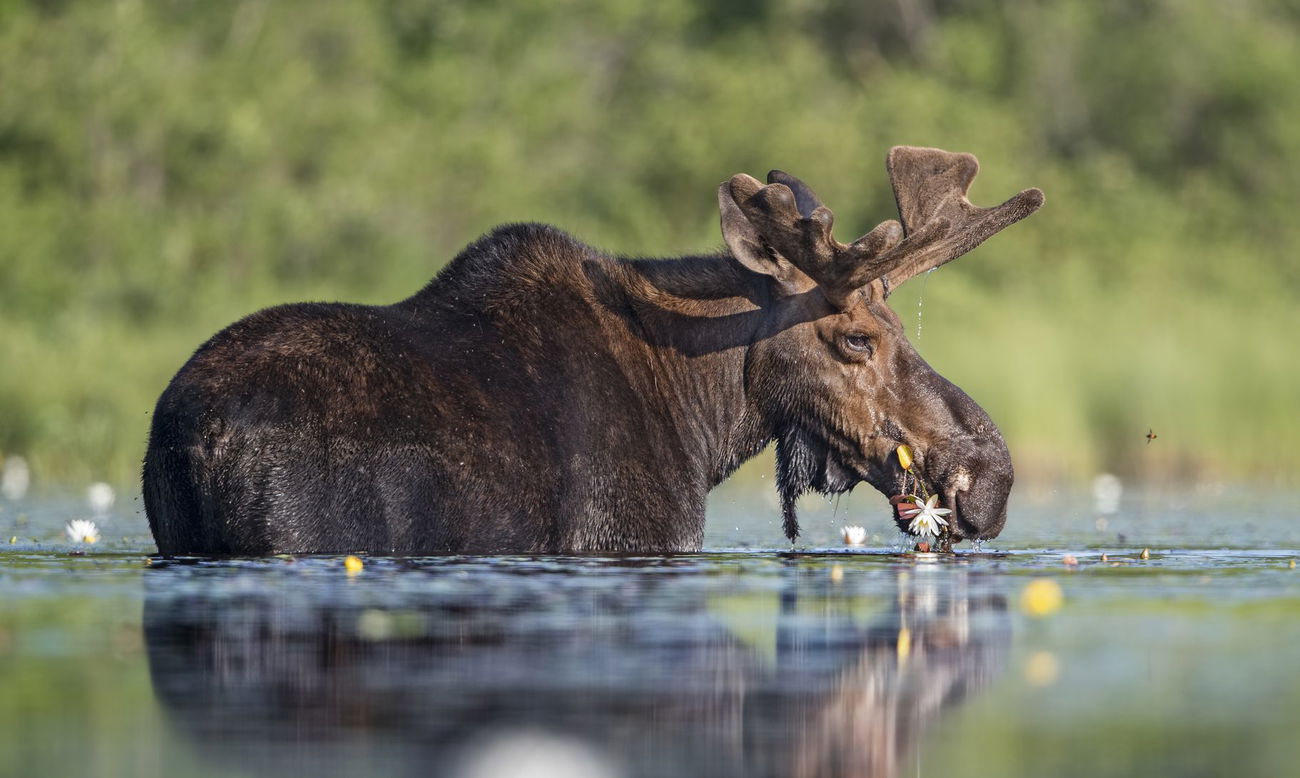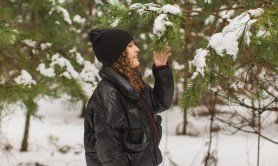

Spotting a moose in your vicinity on your hiking or camping trip can trigger panic. While beautiful creatures, their sheer size and fearsome antlers might make you feel in danger. The good news, you probably aren’t. “Although still rare, moose attacks are more common than bear attacks,” says David Mizejewski, a naturalist with the National Wildlife Federation. To avoid any trouble, Mizejewski offers some advice on what to do if you come across moose in the wild.
Where you’re most likely to spot moose
The most prominent member of the deer family, moose generally live in northern areas like Alaska, Canada, New England, Upstate New York and parts of the northern Rockies. Mizejewski described moose as cold-weather creatures, surviving in places with long winters and mild summers. With robust populations, there’s a greater chance of encountering moose in the woods in Maine, New Hampshire or Yellowstone.

What you should know about moose behavior
The bones on the foreheads are antlers, not horns, and are shed every winter and regrown in fall. “First and foremost, antlers aren’t meant to be aggressive tools and are mostly used to attract mates,” Mizejewski says. Moose will occasionally use their antlers to ward off competitors—but typically they won’t see humans as competition.
“Also, unlike bears, moose are herbivores (plant eaters), so they will never attack you to eat you,” says Mizejewski.
Female moose (who don’t have antlers) can become aggressive to protect their babies. Because moose give birth in spring, females are likely to be most protective in spring and summer, whereas males will be aggressive in fall during mating season.
What to do if you see a moose
If you come across a moose that’s too close for comfort, start by making noise. Moose typically don’t want anything to do with humans and, because they’re prey animals, have a flight response. Standing and fighting will only happen if they feel threatened. If they don’t flee, watch the moose for signals of fear.
“See if the animal pins its ears back, lowers its head, licks its snout or if the hair on its neck and shoulders stands up,” says Mizejewski. “All these are stress responses and are likely to mean that the moose is about to wallop you.”

How to survive a moose encounter
If a moose exhibits aggression, slowly back away and remain facing the animal until you reach at least 50 feet away. When at a safe distance, you can turn and quicken your pace.
If the moose starts to charge you, begin to sprint. Moose can be fast, but they won’t chase you for long and don’t have excellent eyesight. If possible, run in a way that puts something between you and the moose, like a big tree, boulder or car. “The physical barrier can break their charge and aggression,” Mizejewski says. “Even if it doesn’t, it can prevent the moose from getting you.”
On the rare chance you get knocked down, remember that moose typically attack by stomping their feet. You should roll into a ball and protect your head and neck with your hands. If you have a backpack, use it as a shield, and if you have bear spray, use that.
What do when you are safe
After an encounter with any aggressive animal, whether in a local or national park, report it to a ranger station or the National Park Service. “Every state has a wildlife agency responsible for managing wildlife, and they keep track of attacks,” Mizejewski says.
Before your next adventure, educate yourself about the wildlife and follow safety protocols whenever you are in the wilderness. “Negative wildlife encounters are usually a result of bad choices by humans,” he says, stressing that animal attacks in general are very rare and shouldn’t keep you from enjoying nature.

David Mizejewski is a naturalist and television host with the National Wildlife Federation. He holds a degree in Human and Natural Ecology from Emory University and is an expert on wildlife and our environment. He’s dedicated to using his knowledge and his enthusiasm to help others understand and protect wildlife.
David regularly appears in the media to promote wildlife conservation. He hosted and co-produced Backyard Habitat, a television series on Animal Planet that showed people how to transform their yards and gardens into thriving habitats for birds and other local wildlife. He appeared in the Animal Planet mini-series Springwatch U.S.A. that looked at the effect seasonal change has on wildlife, from salamanders and flying squirrels to great horned owls and black bears. He’s appeared on NatGeo WILD on series such as Are You Smarter Than, How Human Are You, and Unlikely Animal Friends and co-hosted the network’s prime time television series Pet Talk.










Pingback: pkjpjo – My WordPress